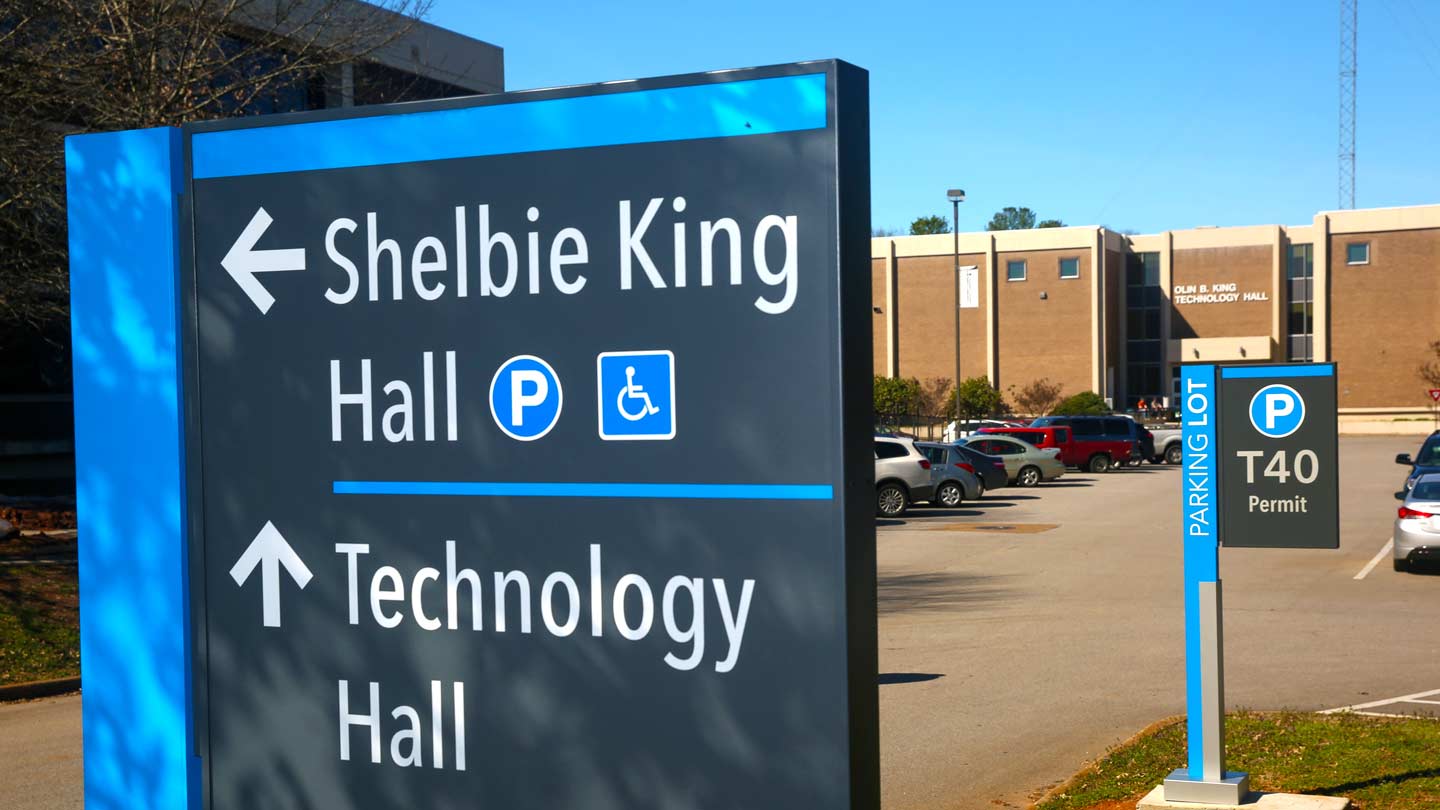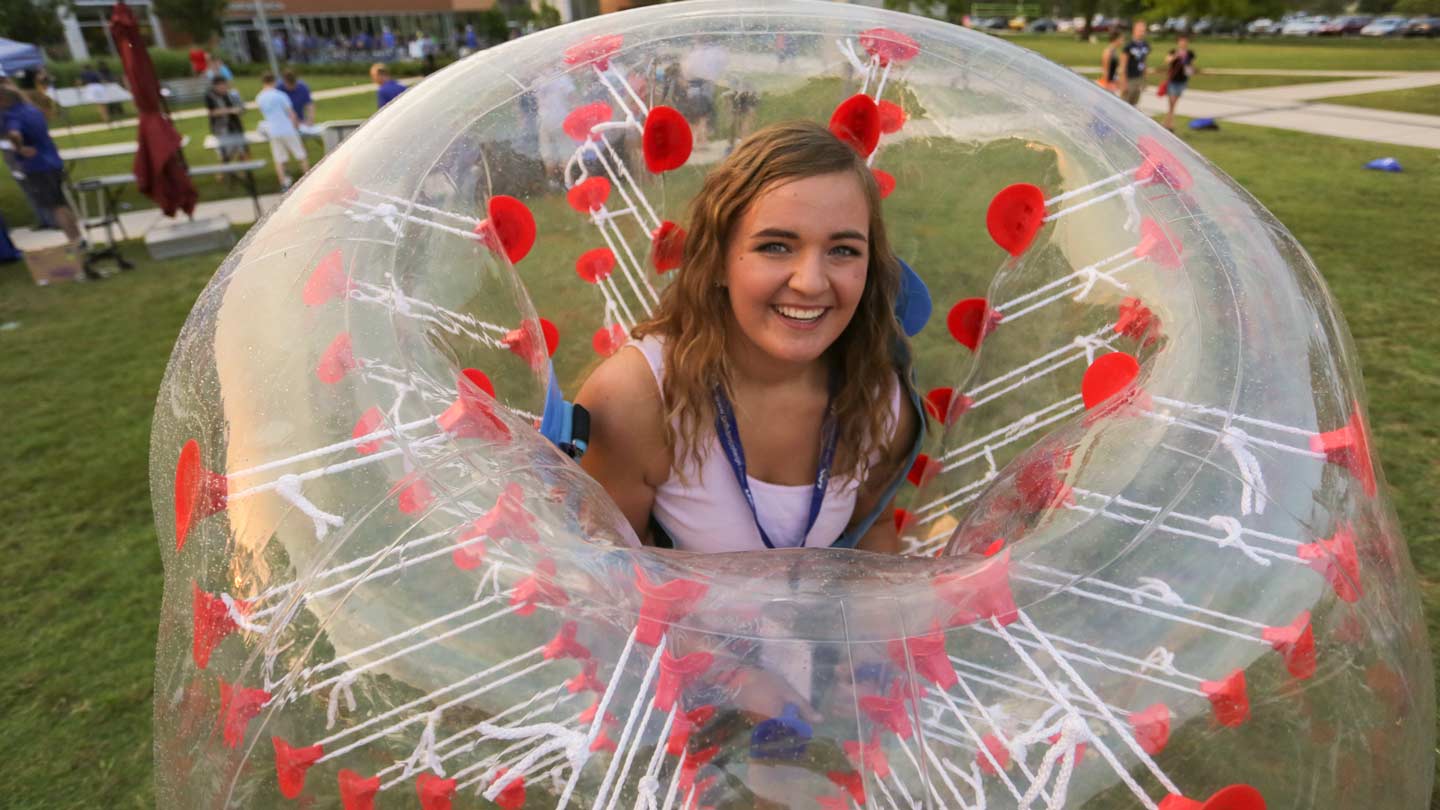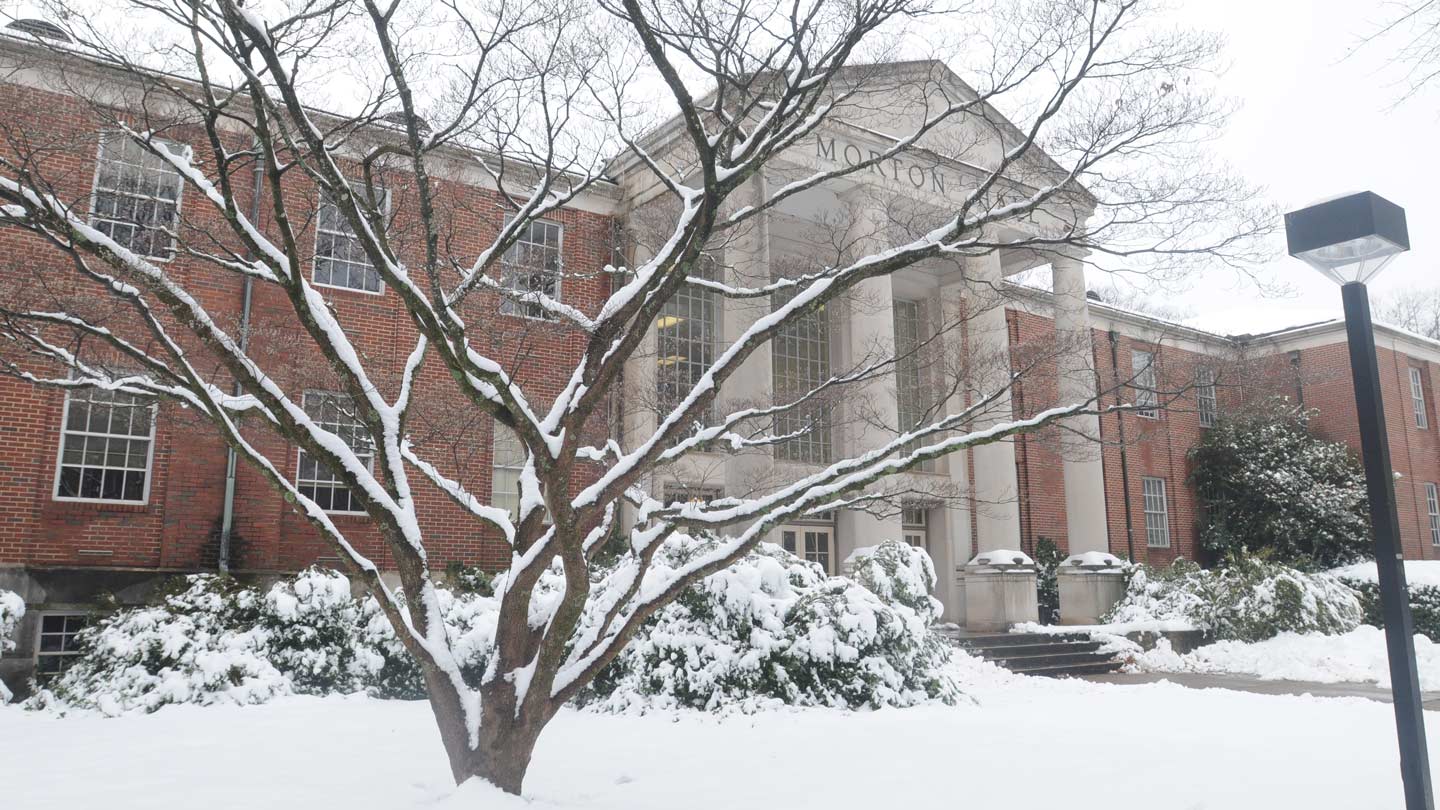


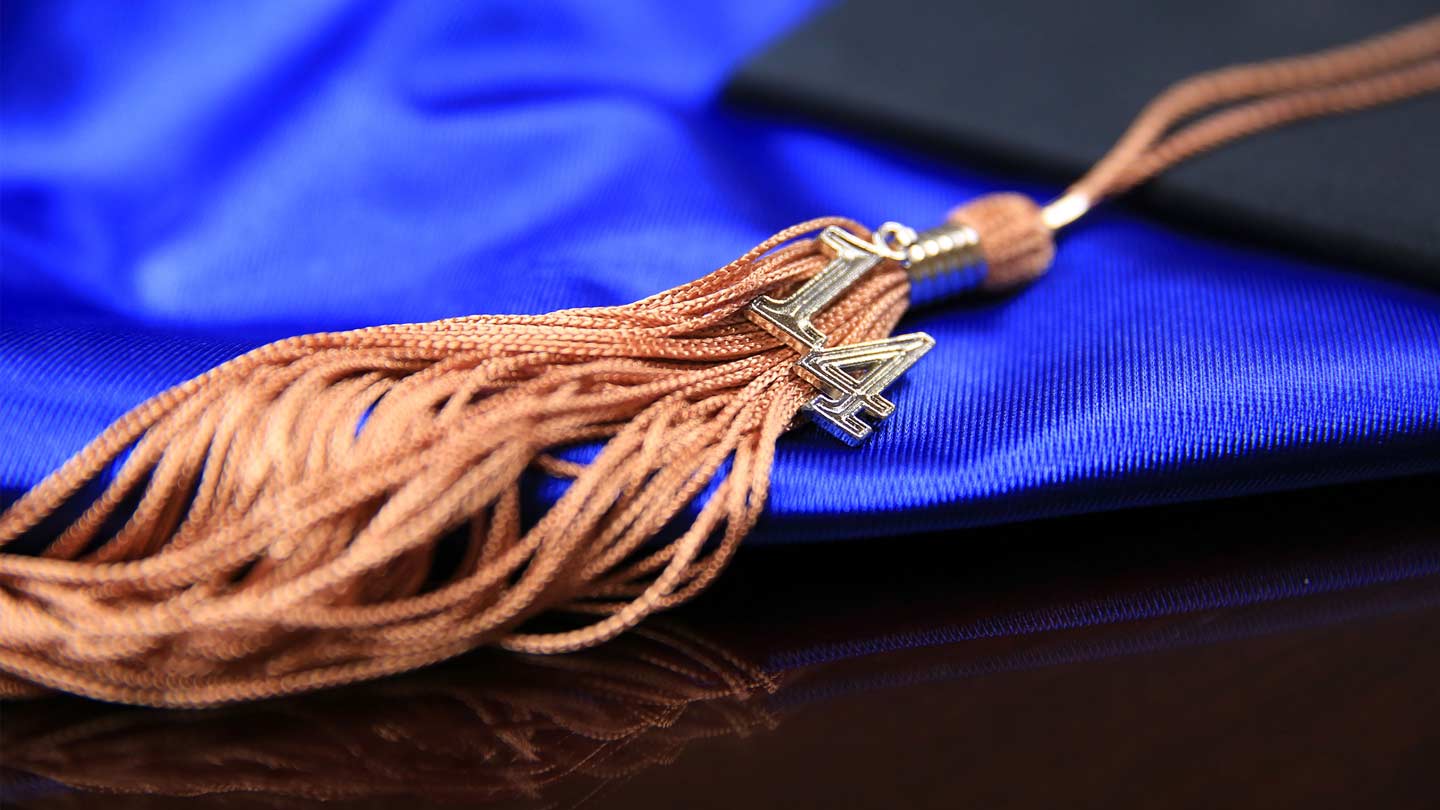
Proposal
The University of Alabama in Huntsville (UAH) is a Tier 1 university located in Huntsville, Alabama. It is a member of the University of Alabama System. UAH offers over 100 degree programs of study at the undergraduate and graduate levels, organized into eight colleges:
- Arts, Humanities, & Social Sciences
- Business
- Education
- Engineering
- Nursing
- Science
- Graduate School
- Honors
Starting in the mid 2010s, I worked as Senior Web Content Developer at UAH in the Office of Marketing and Communications (a division of University Advancement). As part of the Web Communications team, that job included work in different areas of web design, web development, social media, university staff training, and content creation.
UAH uses the Joomla CMS (Content Management System) for the web site, including thousands of web pages for each of the various colleges and departments. In 2014, the university was undergoing a major redesign and relaunch, and implementing a new design was a year-long process and one of the key reasons I was hired. The university employed an outside ad agency to create a new Joomla template design. Working as part of the OMC web team, our job was to refine, test, and implement the new Joomla design. As one can imagine, converting thousands of web pages with a complete top-to-bottom redesign was a time consuming and challenging process.
As part of the work on relaunching the uah.edu site, our team came up with new content ideas and concepts to help engage visitors on the website, especially prospective students. One of my contributions was identifying unused assets and proposing new ways to utilize them as web content. I proposed and created a Photo of the Week feature at uah.edu.
A Photo of the Week section on a website is nothing new or groundbreaking, and may seem like an obvious piece of content for an end-user focused web property geared to a collegiate age demographic. But it did not exist at uah.edu, and it took work and persistence to make it happen.
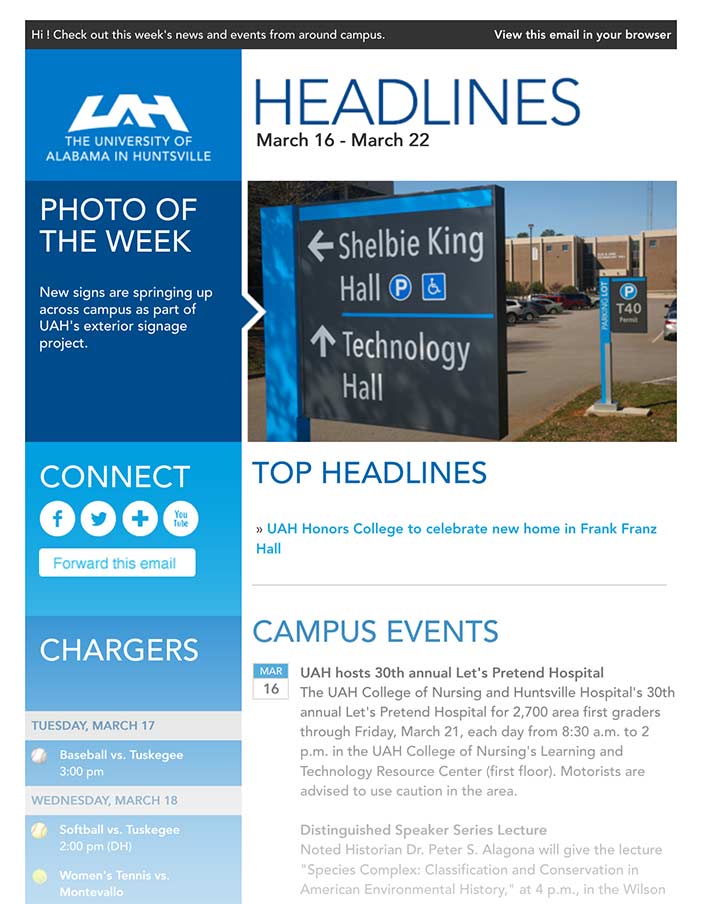
The Office of Marketing and Communications at UAH employs a full-time staff photographer named Michael Mercier. A twenty-five year veteran photo editor of The Huntsville Times newspaper, Mercier produced photography for a wide range of UAH events, departments, news articles, advertising, and web assets. As part of his work, Mercier would take photos of a wide range of subjects around campus to be featured as a tiny photo in a weekly newsletter called UAH Headlines. This newsletter was sent out via email using Constant Contact to only a few hundred UAH faculty and staff. The photo featured in that newsletter was extremely small – only 428px by 260px in size.
With my background in movie poster design and film advertising, I had an affinity for photography and knew the importance of utilizing effective imagery in design. Looking at Mercier’s beautiful photography being reduced to a postage stamp size image in an email newsletter, only to be seen by a few hundred faculty and staff (and not students), I saw a valuable, but under utilized, asset – a missed opportunity.
Sometimes in large scale web projects, participants can get caught up in adding new features, content, and ultimately, cost (whether it be via time or budget) to a website. But in this case, we had an undervalued asset that was already being created, but not being used effectively. Using it in a different way added no additional cost or workload to the photographer, and would enhance the uah.edu website by providing visual content that would be updated on a weekly basis – dynamic content (as opposed to static). It could also be shared across the UAH social media channels, including Facebook and Twitter.
Process
During a weekly web team SCRUM meeting, I proposed the idea of creating a weekly Photo of the Week section of the site, complete with archives, along with a plan to funnel views to the site via reposting it to social media channels. I listed all the benefits, including highlighting the fact that most of the “heavy lifting” of generating the content (photos) was already being done for the existing newsletter. Although somewhat skeptical of the value of the idea and use of our development time, my web manager approved the project to move forward.

I worked with our web designer and web developers to build a quick prototype page for the Photo of the Week section in Joomla. The UAH template design is based on the Bootstrap framework, so we built prototypes using existing UAH design patterns based on Bootstrap 3. Since this was a top-level landing page and did not fall under a existing menu hierarchy, we designed the project as a landing page, without the traditional left-side navigation common to most uah.edu pages.
We used the online tool Trello for all our project management. Trello allowed us to track which team member was working on what, exchanging files/code, have discussions, track bugs, etc. We also used Slack for team communications, especially when testing.
For our local development, our web team used Virtual Box and Vagrant to create local virtual installs of the uah.edu Joomla site, which allowed us to each work on a local copy of the site on our Mac, before deploying to a staging site, and then to the final live production site.
Joomla uses a PHP based template system. For this project, I created a new custom PHP template specific to the Photo of the Week section, so the existing article system in Joomla could be modified to show the new photo pages we designed. A bit of technical background: in Joomla, this is known as an alternate layout, and is a custom PHP file coded to work in the mod_articles_news template output.
For testing, we used BrowserStack, an online cross-browser tool. BrowserStack allows you to test web page designs in a variety of different web browsers to check that web pages are working as intended on as many devices as possible.
Project
After demonstrating the new UAH Photo of the Week landing page working within Joomla in both the front-end and back-end, including generating it’s own Photo of the Week archive pages, the project was approved, tested, and then deployed to the live site. The UAH Social Media Manager used the POTW as content for weekly posts on Twitter and Facebook, which in turn drove traffic back to the uah.edu website.

When working on web sites and other online assets, it is important to consider if new content and designs are the best approach to solve a problem and move a property forward. But it is also important to identify the value of existing assets, work, designs, etc., especially on web projects with a large amount of existing content and stakeholders. Sometimes the question is not “What can we create that is new?”, but rather:
